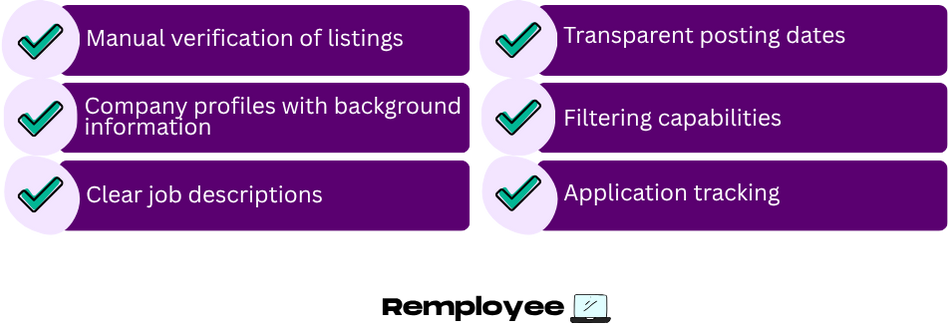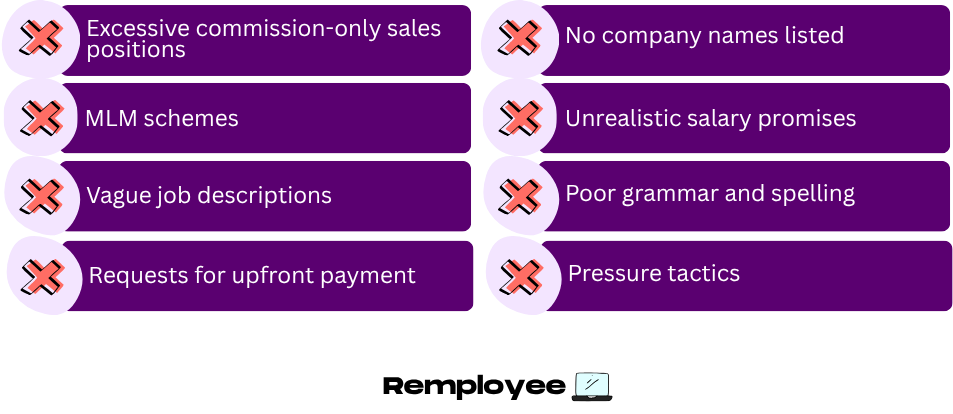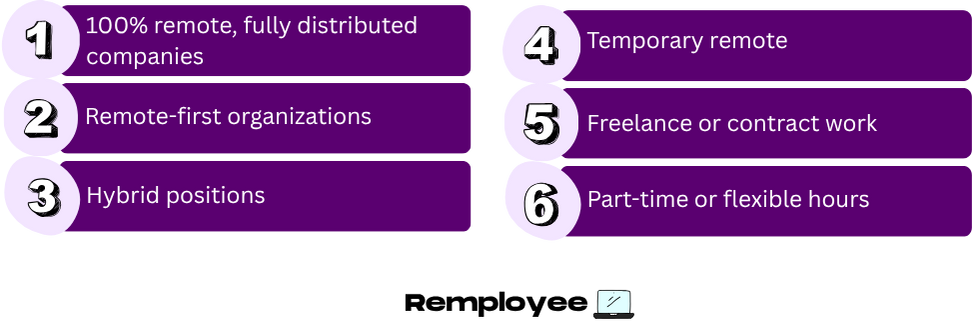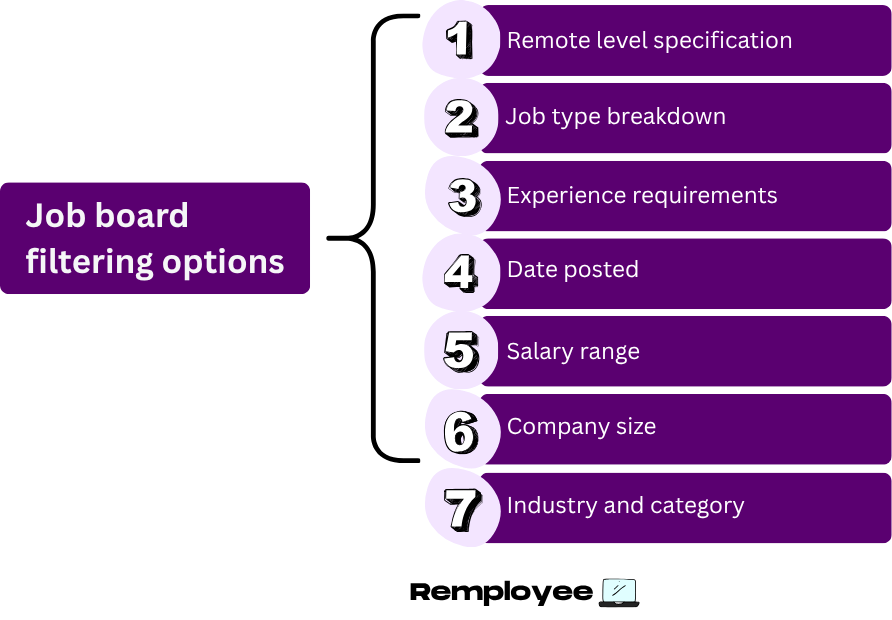Remote work has exploded over the past few years, and with it came a flood of job boards promising to connect you with flexible, location-independent opportunities. But here’s the reality: not all job boards are created equal. Some are goldmines of legitimate opportunities, while others waste your time with outdated listings or outright scams.
I’ve spent the last two years navigating the remote job market, testing over a dozen platforms, and finally landing a fully remote position that pays well and offers genuine flexibility. Along the way, I learned which features actually matter, which red flags to watch for, and how to spot the difference between a helpful platform and a time-waster.
🎯 What You’ll Learn:
➡️ Maximizing success once you’ve chosen your platform
➡️ How to spot quality job boards from time-wasters
➡️ Matching platforms to your specific career goals
➡️ Evaluating features that actually matter
➡️ Red flags that scream “run away”
What Makes a Good Remote Job Board?
Key Features of a Reliable Job Board

A quality remote job board does more than just list openings. It actively curates content to ensure you’re seeing real opportunities from legitimate companies.
Essential features include:
- Manual verification of listings – Human reviewers check each posting for legitimacy
- Company profiles with background information – Access to employer history and culture details
- Clear job descriptions – Detailed information about responsibilities, requirements, and expectations
- Transparent posting dates – You can see exactly when positions were listed
- Filtering capabilities – Options to narrow searches by salary, experience level, and work arrangement
- Application tracking – Tools to monitor your submissions and follow up appropriately
Quality platforms invest in user experience. They update listings regularly, remove filled positions promptly, and provide ways to report suspicious content. The best boards also offer educational resources like resume tips, interview guides, and industry insights.
🎯 Reality Check: If a job board feels cluttered with pop-ups, displays inconsistent information, or makes it difficult to find basic details about listings, move on. Your time has value.
Why Specialized Remote Job Boards Matter
Generic job sites cast a wide net, which sounds great in theory. In practice, you’ll spend hours filtering through irrelevant positions and questionable opportunities.
Specialized remote job boards focus exclusively on location-independent work. This means:
- Every listing allows remote work (no surprises about “occasional office visits required”)
- Search filters address remote-specific concerns like time zones and communication styles
- Resources cater specifically to remote workers and their unique challenges
- Communities connect you with others who understand the remote lifestyle
These platforms understand what remote workers actually need. They know the difference between “100% remote” and “remote until further notice.” They recognize that time zone overlap matters for team collaboration. They get that async communication skills are crucial for distributed teams.
📊 The Numbers: Research shows specialized job boards have a 3x higher success rate for remote positions compared to general platforms. Users report spending 60% less time filtering irrelevant listings.
Signs of a Low-Quality or Scam Job Board

Learning to spot warning signs early saves enormous amounts of time and frustration.
Watch out for these red flags:
- Excessive commission-only sales positions disguised as marketing or business development roles
- MLM schemes promising unlimited income potential
- Vague job descriptions that could apply to virtually any role
- Requests for upfront payment to access jobs or submit applications
- No company names listed – everything marked “confidential employer”
- Unrealistic salary promises like “$10,000/week working part-time from home”
- Poor grammar and spelling in listings and site content
- Pressure tactics urging immediate application or payment
Legitimate platforms maintain high standards. They verify company information, remove filled positions quickly, and respond promptly to user reports of suspicious activity.
⚠️ Common Scam Patterns:
The “reshipping” scam presents itself as a remote package handling job. The “check cashing” fraud offers high pay for simple financial transactions. The “interview via messaging app” scam moves communication off-platform immediately. All legitimate remote employers will interview via standard video conferencing tools and never ask you to handle packages or cash checks as primary job duties.
Identifying Your Remote Work Goals
Clarifying the Type of Remote Role You Want

Remote work comes in many flavors. Getting clear on what you actually want prevents wasted applications and disappointment down the road.
Common remote work arrangements:
- 100% remote, fully distributed companies – No physical office exists; everyone works remotely
- Remote-first organizations – Physical offices exist but remote work is the default
- Hybrid positions – Required office time mixed with remote work
- Temporary remote – Currently remote due to circumstances, may change
- Freelance or contract work – Project-based without traditional employment
- Part-time or flexible hours – Reduced schedules with location independence
Each arrangement affects your daily reality differently. Fully distributed companies typically embrace async communication and global hiring. Hybrid roles might require you to live within commuting distance of an office. Contract work offers freedom but lacks traditional benefits.
🔍 Self-Assessment Questions:
Do you thrive with complete schedule autonomy or prefer some structure? Can you manage your time effectively without external accountability? Do you need benefits like health insurance, or are you covered through other means? What’s your tolerance for video meetings versus written communication?
Answering these questions honestly helps you target the right opportunities from the start.
Matching Job Boards to Your Career Field
Different industries cluster on different platforms. Understanding these patterns helps you focus your search efforts effectively.
Field-specific considerations:
Tech professionals often find better opportunities on AngelList, Stack Overflow Jobs, or GitHub. These platforms attract startups and established tech companies seeking engineering, product, and design talent.
Creative professionals might explore Behance, Dribbble, or specialized freelance platforms. These showcase portfolio work and connect you with clients seeking design, writing, or multimedia skills.
Customer service and administrative roles appear frequently on general remote boards like FlexJobs and Remote.co. These positions often have lower barriers to entry and consistent demand.
Executive and senior leadership positions require targeted approaches. LinkedIn remains strong for networking at this level, while specialized boards like We Work Remotely and RemoteOK feature higher-level roles.
💼 Pro Strategy: Start with one specialized board for your industry plus one general remote platform. This combination maximizes relevant opportunities while keeping your search manageable.
Considering Time Zones and Location Preferences
Geographic factors affect remote work more than most people realize initially.
Time zone overlap matters for:
- Synchronous collaboration – Real-time meetings and discussions
- Response time expectations – How quickly you need to reply to messages
- Team bonding – Participating in virtual social events
- Career advancement – Being visible during key decision-making times
Some roles require specific time zone availability. “Must be available during US business hours” means something very different if you’re in Asia versus Europe. Other positions embrace true global flexibility with async-first communication.
Location restrictions also vary widely. Some companies hire anywhere globally. Others limit hiring to specific countries due to legal, tax, or operational considerations. US-based companies might only hire within the United States, or even restrict to certain states.
🌍 International Considerations:
Employment laws, tax implications, and payment methods all factor into international remote work. Companies often list location restrictions clearly, so filter carefully to avoid applying for positions you cannot legally fill.
Comparing Popular Remote Job Boards
General Job Boards vs. Remote-Only Platforms
The battle between broad job sites and specialized remote platforms represents a fundamental strategic choice.
General boards like Indeed and LinkedIn boast massive listing volumes – millions of openings across all categories. They offer powerful search capabilities and name recognition. Many employers post there by default.
But volume creates problems. You’ll spend significant time filtering out irrelevant results. The remote filter on general sites often includes positions that barely qualify as flexible. Quality varies wildly, and scam listings slip through with regularity.
Remote-only platforms feature fewer total listings but much higher relevance. Every position genuinely allows location independence. Search filters address remote-specific concerns. The community understands your priorities.
📈 Efficiency Comparison:
Testing both approaches over three months, I found remote-only platforms delivered 4x more relevant opportunities per hour spent searching. General boards required extensive filtering but occasionally surfaced opportunities I would have missed otherwise.
The hybrid approach works best: Use specialized remote boards as your primary source. Check general platforms weekly for opportunities from companies new to remote work or roles not yet posted on specialized sites.
Best Remote Job Boards for Beginners
Starting your remote career requires platforms that welcome entry-level candidates and provide guidance along the way.
Top beginner-friendly options:
FlexJobs excels at hand-screening opportunities and providing educational resources. The paid subscription filters out scams completely, and their career coaching helps you present yourself effectively. Entry-level positions appear regularly across customer service, writing, and administrative categories.
Remote.co offers free access to quality listings with excellent company profiles. Their resource section teaches remote work fundamentals, and the site maintains high curation standards. Smaller listing volume means less overwhelming choice for beginners.
We Work Remotely provides straightforward navigation and clear job descriptions. Free to use with legitimate opportunities across skill levels. The community forum offers advice from experienced remote workers.
🎓 Learning Curve Support:
These platforms recognize that remote work requires different skills than traditional employment. They provide interview tips specific to video calls, guidance on setting up home offices, and advice about negotiating remote arrangements.
Job Boards for Experienced Professionals and Specialists
Senior-level remote work requires platforms that understand complex negotiations and specialized skills.
Advanced professional platforms:
LinkedIn remains essential for experienced workers. Your network becomes increasingly valuable at higher career levels. Executive recruiters actively search the platform for senior talent. Premium features allow direct messaging with hiring managers.
AngelList (now Wellfound) connects experienced tech professionals with startups seeking senior engineering, product, and leadership roles. Equity compensation features prominently. You can filter by company stage, funding status, and technology stack.
Toptal and similar vetted freelance platforms suit specialists seeking high-paying contract work. The screening process itself acts as credibility signal. Clients pay premium rates expecting top-tier expertise.
💎 Specialist Strategy:
Experienced professionals should maintain profiles on 2-3 platforms maximum. Quality over quantity becomes even more important at senior levels. Invest time in complete profiles with detailed experience rather than spreading yourself thin across many sites.
Evaluating Job Board Features and Tools
Search Filters and User Experience

The searching experience itself reveals platform quality immediately.
Effective filtering options include:
- Remote level specification – 100% remote, hybrid, temporary, or flexible arrangements
- Job type breakdown – Full-time, part-time, contract, or freelance
- Experience requirements – Entry, mid, senior, or executive level
- Date posted – Within 24 hours, week, or month
- Salary range – When available, though transparency varies widely
- Company size – Startup, scale-up, or established organization
- Industry and category – Specific fields and specializations
Advanced filters might include:
- Time zone requirements or flexibility
- Benefits offered (health insurance, retirement, equipment stipend)
- Communication style (sync vs. async preferred)
- Company values or culture indicators
🎯 User Experience Indicators:
Fast page loading, intuitive navigation, mobile responsiveness, and clean design all suggest a well-maintained platform. Conversely, confusing layouts, broken links, and slow performance indicate neglect.
Test the search functionality before committing time to any platform. Can you save searches? Do alerts work reliably? Can you easily return to listings you viewed previously?
Alerts, Notifications, and Application Tracking
Automation helps you stay on top of opportunities without constant manual checking.
Essential notification features:
Email alerts for new listings matching saved searches keep opportunities flowing to your inbox. The best platforms allow granular control – daily digests for broad searches, instant alerts for highly specific criteria.
Application tracking shows which positions you’ve applied to and when. This prevents embarrassing duplicate applications and helps you follow up at appropriate intervals. Advanced systems might indicate when employers have viewed your application.
Status updates notify you when employers take action – viewing your profile, moving you forward in the process, or marking positions as filled.
📧 Alert Strategy:
Set up 3-5 saved searches with different specificity levels. Broad searches catch unexpected opportunities. Highly specific searches notify you immediately about dream positions. Moderate searches fill in the middle ground.
Adjust alert frequency based on job search intensity. Active searching justifies daily alerts. Passive exploration works fine with weekly digests.
Community, Networking, and Career Resources
The best platforms extend beyond simple job listings into community and education.
Valuable additional features:
Career coaching through webinars, office hours, or one-on-one sessions helps you present yourself effectively. Resume reviews and interview preparation address common weaknesses.
Skills assessments validate your expertise and make your profile stand out. These tests carry more weight when the platform itself administers them rather than relying on self-reported skills.
Community forums connect you with other remote workers. You can ask questions, share experiences, and learn from people further along the journey. Some platforms host virtual networking events or local meetups.
Resource libraries with articles, videos, and guides teach remote work best practices. Topics might include time management, home office setup, communication strategies, or tax implications.
💡 Hidden Value: These extras often justify paid subscriptions even beyond the job listings themselves. Professional development resources typically cost hundreds or thousands of dollars separately.
Checking Credibility and Trustworthiness
Researching Reviews and Success Stories
Platform reputation matters enormously in the job board space.
Research methods:
Check Better Business Bureau ratings and accreditation status. Look for patterns in complaints and how the company responds. Platforms with A+ ratings and quick complaint resolution demonstrate accountability.
Read reviews on Trustpilot, Google Reviews, and similar third-party sites. Focus on recent reviews (within the past year) since platforms change over time. Look for specific details rather than generic praise or complaints.
Search social media for user experiences. Reddit, Twitter, and LinkedIn often feature candid discussions about various platforms. Career-focused Facebook groups share recommendations and warnings.
🔍 Red Flags in Reviews:
Patterns of complaints about billing issues, difficulty canceling subscriptions, or lack of customer support all warrant concern. Multiple reports of fake listings or scams suggest inadequate moderation.
Conversely, success stories from users similar to you indicate the platform delivers results for your demographic and career field.
Avoiding Fake Listings and Phishing Scams
Even legitimate platforms occasionally host fraudulent content. Learning to spot fakes protects your personal information and time.
Scam indicators:
Requests for personal financial information early in the process (banking details, social security numbers, credit card numbers) always raise alarms. Legitimate employers collect this information after hiring, never during initial application.
Communication moving immediately to personal email, text messages, or messaging apps suggests attempts to avoid platform oversight. Real hiring happens through official channels initially.
Job descriptions copied from other sources, filled with grammatical errors, or impossibly vague indicate low-quality listings at best, scams at worst.
Promises of extremely high compensation for minimal work or qualifications defy economic reality. “Earn $5,000 weekly with no experience required” always signals fraud.
⚠️ Protection Strategies:
Use a dedicated email address for job searching. This contains potential spam if your information ends up compromised. Create professional username conventions that separate job search from personal communication.
Research every company before applying. Check their website, social media presence, and employee reviews on Glassdoor. Real companies have digital footprints.
Report suspicious listings to the platform immediately. Quality job boards take fraud seriously and investigate quickly.
Verifying Company Information and Listings
Due diligence prevents wasted applications and protects against sophisticated scams.
Verification steps:
Visit the company’s official website directly (not through links in the job posting). Look for the position listed in their careers section. If you cannot find it, contact them through their official channels to confirm legitimacy.
Check LinkedIn for company profiles and current employees. Real organizations have people working there who list the employer on their profiles. Review their activity and growth patterns.
Search news sources for company announcements, funding rounds, or press releases. Legitimate businesses generate coverage. Complete absence of any media presence raises questions.
Review employee testimonials on Glassdoor, Indeed, or Comparably. While all companies have some negative reviews, patterns of similar complaints warrant attention.
✅ Green Flags:
Detailed company profiles on the job board itself indicate the platform has vetted the employer. Direct links to company career pages suggest official partnerships. Specific contact information (not just generic email addresses) demonstrates transparency.
Making the Final Choice
Balancing Cost, Quality, and Job Relevance
Most job seekers use a combination of paid and free platforms strategically.
Decision framework:
Free platforms work well for casual exploration or when budget constraints exist. You sacrifice some time filtering irrelevant listings but access thousands of opportunities at no cost. Sites like We Work Remotely, Remote.co, and RemoteOK all offer quality free options.
Paid platforms justify their cost through time savings, enhanced features, and quality curation. FlexJobs at $24 monthly eliminates scam filtering completely. The skills tests and career resources add substantial value beyond listings themselves.
💰 Cost-Benefit Analysis:
Calculate your effective hourly rate for job searching. If you value your time at $25/hour and a paid platform saves you 10 hours monthly filtering scams, the $24 subscription pays for itself immediately. The break-even point arrives quickly for serious job seekers.
Consider your search timeline too. Intensive three-month searches might justify paid subscriptions you’ll cancel after landing a position. Passive exploration over longer periods favors free platforms.
Testing Multiple Platforms Before Committing
Most people benefit from trying 3-4 platforms initially before settling on their primary resources.
Testing approach:
Spend one week focused on each platform. Apply to 5-10 positions. Note response rates, listing quality, and user experience. Track which platforms generate interviews and progress.
Many paid services offer trial periods – FlexJobs has a $2.95 two-week trial, for example. Take advantage of these to assess value before committing.
Compare your results across platforms. Which generated the highest response rates? Which felt most efficient? Which had listings most aligned with your goals?
📊 Comparison Metrics:
Track applications submitted, responses received, interviews scheduled, and time invested on each platform. These numbers reveal which delivers best results for your specific situation.
After testing, commit to 1-2 platforms as your primary sources. Check additional sites weekly rather than daily to catch opportunities without overwhelm.
Creating a System to Track Applications Across Boards
Organization separates successful job searchers from those who spin their wheels endlessly.
Tracking spreadsheet essentials:
Create columns for company name, position title, application date, platform used, application method (direct vs. job board), follow-up dates, interview stages, and outcome. Add a notes column for important details.
Color-code status: gray for applied, yellow for response received, green for interview scheduled, blue for offer received, red for rejection.
Set calendar reminders for follow-up actions. Most applications deserve gentle follow-up after 7-10 days if you’ve heard nothing.
🎯 Organization Benefits:
Tracking prevents duplicate applications that make you look disorganized. It helps identify which platforms generate best results. It ensures timely follow-up without letting opportunities slip away.
Review your tracker weekly. Note patterns in successful applications. What do positions you advance with have in common? Which platforms deliver results? Adjust your strategy based on data rather than guesswork.
Maximizing Your Success on Remote Job Boards
Optimizing Your Resume for Remote Keywords
Remote positions prioritize different skills and experiences than traditional roles.
Essential remote work keywords:
Self-motivated, autonomous, asynchronous communication, distributed team experience, remote collaboration tools, video conferencing, project management software, time zone management, written communication, virtual team leadership.
Mention specific tools by name – Slack, Zoom, Asana, Trello, Google Workspace, Microsoft Teams. These show concrete experience rather than vague claims.
Quantify remote achievements. “Managed remote team of 12 across 6 time zones” beats “experienced with remote work.” “Increased async communication efficiency by 40%” demonstrates measurable impact.
✏️ Remote-Specific Resume Sections:
Add a “Remote Work Experience” or “Distributed Team Contributions” section if you have substantial background. This highlights relevant experience that might get buried in traditional job descriptions.
Include your home office setup if it’s particularly strong. “Dedicated home office with high-speed internet and professional video conferencing setup” addresses common employer concerns.
Setting Up Job Alerts Strategically
Alert strategy separates reactive from proactive job seekers.
Smart alert configuration:
Create tiered alerts based on specificity. Your dream job alert includes exact titles, specific companies, and precise requirements. Set this for instant notification.
Mid-level alerts cover broader categories with some flexibility on requirements. Configure these for daily digest delivery.
Exploratory alerts track industries or roles you might consider but aren’t primary targets. Set these for weekly summaries to avoid inbox overwhelm.
⏰ Timing Matters:
New listings often receive applications within hours. Instant alerts for highly specific dream positions let you apply quickly before competition accumulates. Early applications get more attention than those arriving days later.
Adjust alert parameters based on results. If you’re drowning in irrelevant notifications, tighten criteria. If you’re seeing too few opportunities, broaden parameters slightly.
Building a Consistent Application Routine
Consistency transforms job searching from overwhelming to manageable.
Daily routine structure:
Spend 30-60 minutes daily on applications rather than marathon weekend sessions. This maintains momentum without causing burnout. You’ll stay top-of-mind with hiring managers through regular submissions.
Morning applications often perform better. Hiring managers typically review submissions early in their workday. Your application receives fresh attention rather than competing with afternoon fatigue.
Batch similar tasks together. Review all new listings first, then customize applications, then submit everything at once. This maintains focus and reduces context switching.
📅 Weekly Rhythm:
Monday mornings review weekend postings. Tuesday and Wednesday submit major applications requiring extensive customization. Thursday handle quick-apply opportunities. Friday follow up on previous submissions. Weekends research companies and prepare for the coming week.
Track weekly metrics – applications submitted, responses received, interviews scheduled. Adjust your approach based on what’s working. If response rates drop, evaluate your application materials or target different positions.
The Bottom Line
Choosing the right remote job board comes down to understanding your goals, evaluating platform quality, and using available resources strategically. The best approach combines one specialized remote board with selective use of general platforms, consistent application routines, and careful tracking of results. Success takes time – typically 3-6 months for securing a quality remote position – but the right platform dramatically improves your odds while reducing frustration along the way.
After years of freelancing through broken systems and vague job boards, Josie built Remployee to help others find what she couldn’t at first: flexible work that feels like freedom, not chaos. She believes real jobs should fit real lives—and that thoughtful writing can be a bridge to better work. If you’re looking for permission to choose differently, Josie’s already given it.



